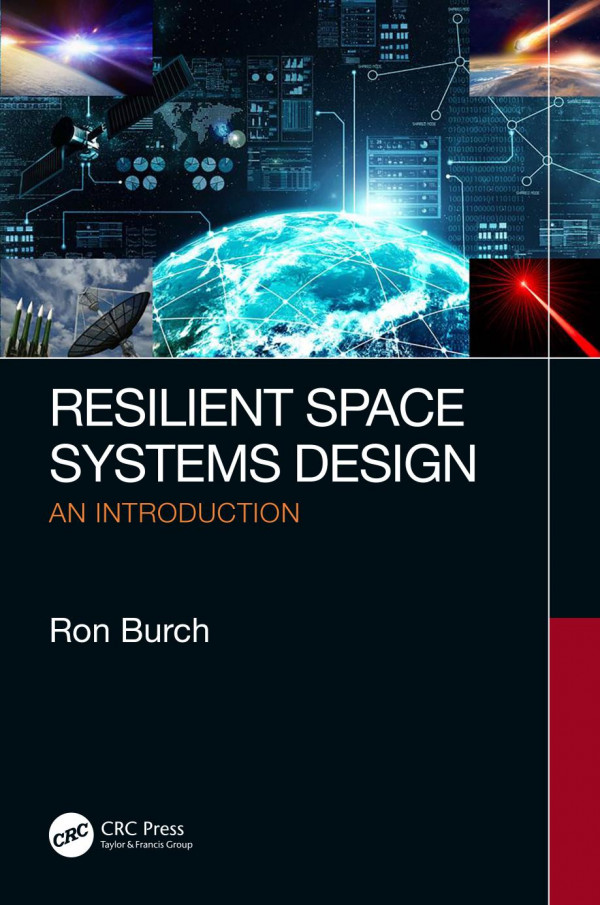Resilient Space Systems Design An Introduction 1st Edition by Ron Burch ISBN 0429620772 9780429620775
$50.00 Original price was: $50.00.$25.00Current price is: $25.00.
Resilient Space Systems Design An Introduction 1st Edition by Ron Burch – Ebook PDF Instant Download/Delivery: 0429620772, 9780429620775
Full download Resilient Space Systems Design An Introduction 1st Edition after payment

Product details:
ISBN 10: 0429620772
ISBN 13: 9780429620775
Author: Ron Burch
Recognized as a “Recommended” title by Choice for their November 2020 issue. Choice is a publishing unit at the Association of College & Research Libraries (ACR&L), a division of the American Library Association. Choice has been the acknowledged leader in the provision of objective, high-quality evaluations of nonfiction academic writing. Presenting a fundamental definition of resilience, the book examines the concept of resilience as it relates to space system design. The book establishes the required definitions, relates its place to existing state-of-the-art systems engineering practices, and explains the process and mathematical tools used to achieve a resilient design. It discusses a variety of potential threats and their impact upon a space system. By providing multiple, real-world examples to illustrate the application of the design methodology, the book covers the necessary techniques and tools, while guiding the reader through the entirety of the process. The book begins with space systems basics to ensure the reader is versed in the functions and components of the system prior to diving into the details of resilience. However, the text does not assume that the reader has an extensive background in the subject matter of resilience. This book is aimed at engineers and architects in the areas of aerospace, space systems, and space communications.
Resilient Space Systems Design An Introduction 1st Table of contents:
1. The Space System
1.1 Space System Components
1.2 System Capability
1.3 System Architectures
1.3.1 Parallel Architectures
1.3.2 Series Architectures
1.3.3 Hybrid and Other Architectures
1.4 Space System Elements
1.4.1 The Space Segment
1.4.1.1 Satellite Orbits
1.4.1.2 Satellite Composition and Size
1.4.1.3 Satellite Operating Frequencies
1.4.2 The Ground Segment
1.4.2.1 Satellite Command and Control
1.4.2.2 Satellite Operations
1.4.2.3 Mission Planning
1.4.2.4 Gateways and Teleports
1.4.2.5 Network Operations
1.4.3 The User Segment
2. Defining and Evaluating Resilience
2.1 Resilience Domains, Attributes, Timeline, and Criteria
2.2 Valuing Resilience
2.3 Prerequisites for Evaluating Resilience
2.4 Approaches to Calculating Resilience
2.5 Resilience Calculation Parameters
2.6 The OSD Taxonomy of Resilience
2.7 Other Resilience Nomenclature
3. Threats
3.1 Categorizing Threats: Adverse Conditions and Hostile Actions
3.1.1 Adverse Conditions
3.1.2 Hostile Actions
3.2 Threat Attributes and Characteristics
3.2.1 Threat Types
3.2.1.1 Physical or Kinetic Threats
3.2.1.2 Electronic Threats
3.2.1.3 Optical Threats
3.2.1.4 Cyber Threats
3.2.2 Threat Severity
3.2.3 Threat Target(s)
3.2.4 Threat Effectiveness
3.2.5 Persistent Threats
3.2.6 Reversible and Irreversible Effects
3.3 Multiple Threats to a System
3.4 Evolving or Escalating Threats
4. Threat Mitigation
4.1 Threat Mitigation Approaches
4.2 Threat Mitigation Options for Space Systems
4.2.1 Mitigating Electronic Threats: Radio Frequency (RF) Signal Interference and Jamming
4.2.1.1 Spatial Isolation
4.2.1.2 Receive Frequency Selectivity (Filtering)
4.2.1.3 Spread Spectrum Waveforms and Digital Signal Processing
4.2.2 Mitigating Physical (or Kinetic) Threats
4.2.2.1 Ground Stations and Terrestrial Networks
4.2.2.2 Mission Planning Element
4.2.2.3 Space Segment
4.2.3 Mitigating Optical Threats
4.2.4 Mitigating Cyber Threats
5. Modeling and Calculating Resilience
5.1 Modeling Resilience
5.1.1 Individual Threats
5.1.2 Multiple Coordinated Threats — Cumulative Impact
5.1.3 Probability-Weighted Resilience
5.1.4 Superposition of Threats
5.2 Determining the Resilience Coefficient Values
5.3 Modeling Resilience Attributes
5.3.1 Avoidance
5.3.2 Robustness
5.3.3 Recovery
5.3.4 Reconstitution
5.4 System Availability and Resilience
6. Designing for Resilience
6.1 Establishing Requirements
6.2 Incorporating Resilience Engineering into the System Design Process
6.2.1 Architectural Trades
6.2.2 Elemental Protection
6.2.3 Distribution of System Capability
6.2.3.1 Limits of Distribution
6.2.4 Methods of Distributing System Capability
6.2.4.1 Uniform versus Non-Uniform (Mixed) Architectures
6.2.5 The Relationship Between Elemental Protection and Distribution
6.2.6 Cost versus Resilience Trades as Function of Distribution
6.2.7 Diversifying Distributed Architectures
6.2.8 Disaggregating a System Architecture
6.3 Evaluating Resilience for Multiple Missions and Threats
6.3.1 Systems Supporting Multiple Services or Missions
6.3.2 Comparing Architectures Across Multiple Threats
6.3.3 Sequential or Recurring Threats
6.4 Including Threat Effectiveness
6.5 Other Statistically Relevant Considerations of Resilience Calculations
6.6 Resilience Design and Analysis Tools
7. Applying Resilient Design Techniques
7.1 Creating a Resilient Space Architecture
7.1.1 Multilayered Architectures
7.2 Increasing Resilience Through Distribution
7.3 Increasing Resilience Through Diversification
7.4 Increasing Resilience Through Responsive Recovery and Diversification
7.5 Designing for Resilience to Multiple Threats
7.6 Designing for Resilience and Cost in a Multi-Threat Environment
7.6.1 Design #1 Resilience Calculation
7.6.2 Design #2 Resilience Calculation
7.6.3 Design #3 Resilience Calculation
7.7 Multiple Threats and Multiple Mitigations Example
8. The Future of Resilient Space System Design
8.1 The Cost of Satellite Capability on Orbit
8.1.1 Launch Costs
8.1.2 Increasing the Capability Density and Affordability per Satellite
8.1.3 Cost of Increased Ground Complexity
8.2 Space and Ground Segment Flexibility
8.3 The Impact of Increased Congestion
8.4 Autonomy and Cognitive Systems
8.5 Extension of the Terrestrial Network
8.6 On-orbit Servicing
People also search for Resilient Space Systems Design An Introduction 1st:
resilient space systems design an introduction
space systems command logo
what is resilient design
what is space systems engineering
resilient space systems
Tags:
Ron Burch,Resilient Space Systems,Design,Introduction
You may also like…
Computers - Computer Science
Group Recommender Systems An Introduction 1st Edition Alexander Felfernig
Arts - Graphic Arts
Science (General)
Metabolomics Practical Guide to Design and Analysis 1st Edition Ron Wehrens (Editor)
Relationships & Lifestyle
Human Permaculture Life Design For Resilient Living Bernard Alonso
Engineering
Engineering












